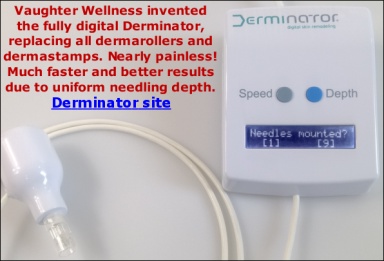Dermarolling / Microneedling / Latisse for eyelashes enhancement
« on: December 14, 2010, 01:42:35 PM »LATISSE is prescription treatment for eyelash length, thickness and color enhancement.
No, you cannot use a dermaroller. Latisse must be applied to the roots of the upper eyelashes and a dermaroller cannot be used on the eyelids due to potential eye injury.
You can use Latisse to grow eyebrows as well even though it is not officially promoted for eyebrows.
The active ingredient of Latisse is Bimatoprost 0.3 mg/mL. Bimatoprost has been used to treat glaucoma (longer/thicker eyelashes were the unexpected "side effect").
Latisse does not trigger new eyelashes. It prolongs the active/growing phase of existing eyelash follicles (hairs have active and dormant phases)
EFFICACY:
"After 16 weeks, 78% of those in the bimatoprost group had at least a 1-point increase on a scale that measured eyelash prominence compared with 18% of those on the vehicle."
It can take up to 4 months to achieve the full results.
A bottle normally lasts 6-8 weeks.
Do not apply it to the eyelashes but to the skin - the base of the eyelashes. Try to prevent it getting into your eyes. If it gets into your eyes, you do not have to rinse it. It is not dangerous because it is an ophthalmic solution but you should avoid getting it repeatedly into your eyes since it reduces intraocular pressure.
If you discontinue the product for a significant time, the lashes will gradually (in 1-2 months) go back to their original state.
Lumigan drops for glaucoma are identical to Latisse but much cheaper.
Revitalash and some other products do no longer contain Bimatoprost due to patent issues.






